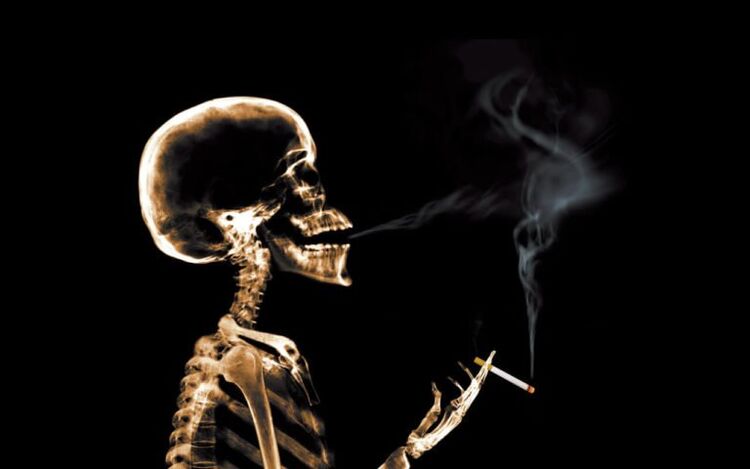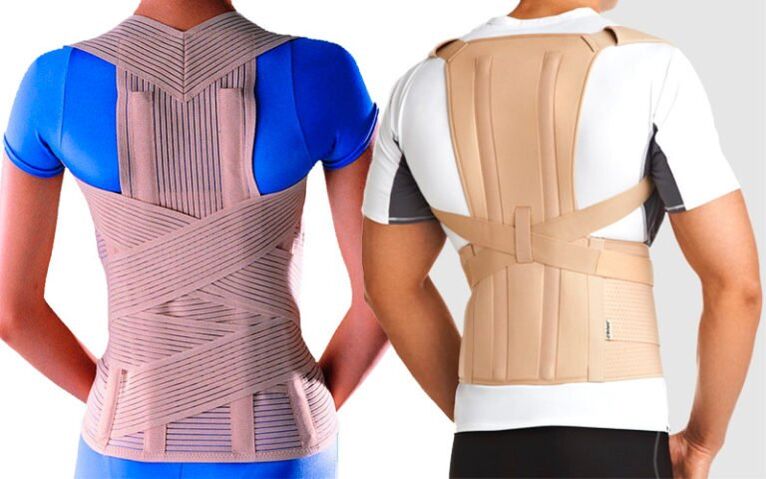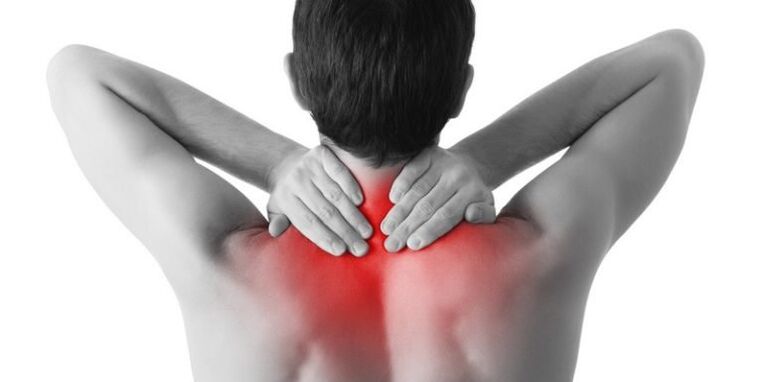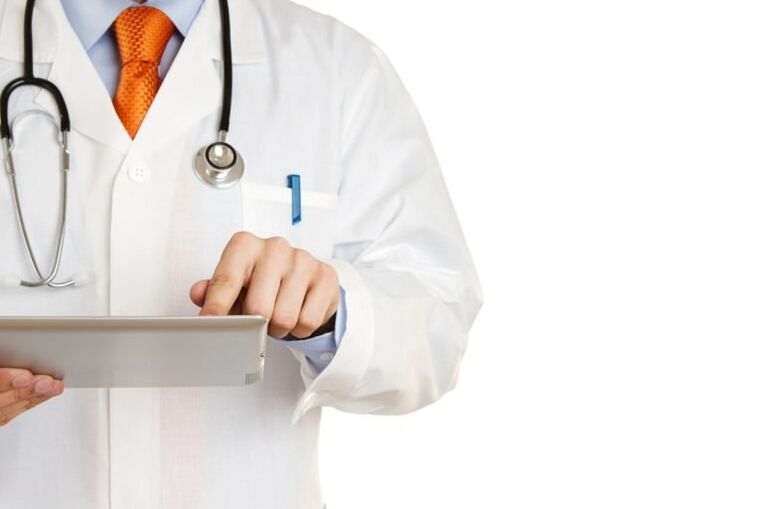If a person has back pain in the shoulder area, it automatically correlates it with the condition of the spine. They are partly right: this long-suffering nucleus of our skeleton bears heavy loads, which can only affect its condition.
But often the pain in this area of the back signals a disorder in the internal organs. The nature of the pain corresponds to the disease, so in the doctor's appointment it is important to describe its manifestations in as much detail as possible.
What causes shoulder pain
Pathological changes in:
- SPINE;
- internal organs;
- surrounding structures.
It hurts in the shoulder area and with some rare diseases:
- Fractures of the spine and its systemic lesions.
- Spinal metastases in stomach cancer, and sometimes in other organs.
Pain depending on the type of disease is localized:
- Above the shoulders.
- Under the shoulders.
- Between the shoulders.
- On shoulders.
Symptoms associated with pathologies of the internal organs
The stomach, lungs, liver and heart can project their pain below the shoulder - right or left.
If it hurts on the left side, this could be a sign:
- Gastric or peptic ulcer: It is a recurring pain associated with seasonal exacerbations. Accompanied by pain in the upper abdomen. As the pain increases, vomiting occurs.
- Myocardial infarction: the disease is accompanied by acute posterior sternal pain, extending below the left scapula. Cardiac ischemia has similar signs, but in this case, sensations of pain also appear in the left hand.
- Detection of a stomach ulcer: the patient's body is covered with cold sweat, he may feel sick until the vomit opens. The patient tries to relieve the pain by changing position, but these actions do not give the expected result.
- Intercostal neuralgia: pain below the left shoulder occurs in attacks, which is aggravated by the slightest physical exertion. It tingles and burns in the area of the heart. Coughing and deep breathing hurt.
It may hurt under the right shoulder when:
- Psychological failures in the body. At the same time, the patient feels heat in the chest, may complain of compression and tingling in the heart muscle.
- Pathological changes in the gallbladder: additional symptoms - bitterness in the mouth after fatty, salty and fried foods, pain in the right hypochondrium.
- Pleurisy and pneumonia: pain below the right shoulder is reflected during coughing.
- Kidney disease: in this case, the cough also leads to increased pain, but, unlike lung disease, the patient has difficulty urinating.
Pain associated with pathologies of the spine
Spine problems can occur after injuries, fractures or bruises. But there are also diseases that have no obvious causes. And all this is manifested by pain in the shoulder area.
With any pathology of the spine, the pain between the shoulders must be combined:
- stiffness;
- Feeling like a goose?
- Numbness.

Cervical intervertebral pain is typical of heavy smokers.
Osteochondrosis
If the nutrition of the tissues is disturbed, dystrophic changes appear in them. In the spine, this process affects the intervertebral discs. They can no longer resist the pressure exerted on their vertebrae. The loss of elasticity of the disc leads to compression of the spine. The nerve endings of the spinal cord are pressed - here is intense pain.
The body tries to protect the spine from heavy loads by developing bone tissue along the ends of the vertebral processes. Bone growths are called osteophytes. They can be removed, but in the context of osteochondrosis, they will grow again.
The pain in osteochondrosis is located at the site of the spinal cord injury. If the area of the cervix is affected, the patient has morning pain in the right side of the neck. The pain radiates to the shoulder and arm, it is felt over the shoulder. The head may feel dizzy, the torment is aggravated by a deep breath and cough.
Osteochondrosis of the thoracic region manifests as pain between the shoulders - right and left of the spine. The pain can be made worse by sneezing, coughing and sudden movements. When you try to straighten your shoulders, your chest and lumbar region begin to creak.
It becomes difficult for a person to breathe through the chest, as the mobility of the ribs decreases and they unconsciously switch to breathing with their stomach.
Treat osteochondrosis with a conservative method. The patient is prescribed:
- Painkillers and anti-inflammatory drugs.
- Physiotherapy procedures?
- Therapeutic exercise?
- Reflexology?
- Massage;
- Spinal traction?
- Manual therapy.
If none of the treatments work, the surgeons begin their work.
Spinal joint
The symptoms of this disease are similar to those of osteochondrosis. But in this case, the intervertebral disc is displaced, not exhausted. The vitreous cartilage is forced to take the load. In such extreme conditions, its tissue becomes thinner and loses its ability to perform its functions.
If spondylitis is not treated, the entire joint can become inflamed and then lose mobility completely. The patient's condition is aggravated by osteophytes.
Scoliosis
The curvature of the spine relative to its axis to the right or left is common - almost half of humanity is affected by this disease. But for the most part, the disease is not severe and therefore the pain occurs periodically - if a person strained his back or stood or sat in one position for a long time.
Early scoliosis cannot be identified visually, so if pain occurs in the shoulder area, it is in the patient's best interest to consult a physician. He will prescribe an x-ray - direct and lateral.
With the further development of scoliosis, it can be detected independently: the "zigzags" of the spine become clearly pronounced. Running scoliosis is also determined by the relative position of the shoulders - one of them will be lower than the other.

The treatment of scoliosis is a long-term affair even at its high intensity. Massage, special exercises and wearing corsets will help you get rid of the curvature of the spine.
Intervertebral hernia
The intervertebral disc consists of:
- Gelatinous core?
- Fibrous ring, consisting of fibers.
- The two thin layers of cartilage that cover the discs up and down.
The nucleus is located inside the ring and the cartilage tissue, closing the structure, at the same time serves as a conduit of food from the vessels of the vertebral body to the disc.
Pathological changes in the vertebrae lead to disruption of metabolic processes in the intervertebral discs. Their thickness decreases, the fibrous ring cracks under the influence of loads, opening the way to the outside of the gelatinous mass of the core. This procedure is accompanied by severe pain. It is concentrated at one point, but sometimes there is a return to the pulmonary and cardiac areas.
An intervertebral hernia in the chest area is extremely rare, so when pain occurs in the shoulder area, the patient is first screened for other diseases.
Intervertebral hernia is treated with anti-inflammatory drugs, physiotherapy and special exercises. In severe cases, only surgery can help.
Tuberculosis of the spine
The TB bacteria can affect any part of the spine, but in 60% of cases it occurs in the thoracic region. Most often men suffer from this disease. Basically, two vertebrae are involved in the process, but there are cases where TB spreads to three or more.
The symptoms of the disease can vary depending on the number of affected vertebrae. But there is a constant symptom - it is pain. If it is felt between the shoulders, this indicates damage to the cervical vertebra.
It also hurts with tuberculosis of the chest area, but in this case the pain will radiate (give) to the chest, groin or abdomen. Patients complain of burning, twisting, "piercing" in the back.
Tuberculosis of the spine is difficult to diagnose, severe pain already appears at the stage of various complications. If you have the slightest suspicion of this disease, go immediately to a specialist for examination.
Hypertension and hypothermia
If the back is overloaded, painful sensations may also occur in the shoulder area. By itself, this phenomenon is not considered a disease, but continuous overload can cause osteochondrosis, curvature of the spine and the formation of intervertebral hernias.
Dressmakers, drivers, surgeons, people doing sedentary work, etc. complain of back pain. If hypothermia (currents, functional air conditioning) is added to hypertension, then back pain can be taught - severe pain concentrated under the shoulders or in the spine.
This problem is treated with heating ointments, anti-inflammatory drugs and massage.
Myositis
Influenza, SARS, severe hypothermia can lead to myositis - inflammation of muscle tissue. Most often, this disease affects the muscles located in the shoulder area. This condition does not threaten the body with anything terrible, but the pain creates discomfort.

Pain in the shoulders
Pain occurs for several reasons:
- Fracture or injury resulting from a fall. The shoulder joint swells, the movement of the limb hurts.
- Osteomyelitis (inflammation of the bone tissue): accompanied by fever, fever due to poisoning of the whole organism.
- Pterygoid shoulder: this phenomenon is caused by damage to the anterior dentate gyrus (located on the side of the chest), paralysis of the rhomboids, trapezius muscles or their traumatic rupture (from which acrobats and circus trainers, professional athletes suffer).
If the articular sac is inflamed, the scapula begins to creak. In addition to this problem, the patient is concerned about the weight and clicks on the shoulder joint.
Diagnostics
Since back pain is one of the many diseases, the examination is performed according to different methods:
- chest X-ray;
- Laboratory research?
- ultrasound;
- Magnetic resistance or computed tomography.
- ECG.
All tests are prescribed by the surgeon - if your back hurts, go to him first. But in the future, based on the results of the research, you will need advice:
- Orthopedic;
- Gastroenterologist?
- Neurologist;
- Pulmonologist.

If for any reason the doctor did not pay attention to the accompanying symptoms, consult on your own initiative.
Treatment
Self-medication for pain in the shoulder area is categorically contraindicated. The maximum that the patient can endure is taking painkillers and analgesics. The reception should be single and only if it is necessary to stop the pain syndrome before visiting the doctor.
The treatment is prescribed by a doctor: usually, to alleviate the condition, it is enough to take analgesics, chondroprotectants, anti-inflammatory drugs. In addition, the doctor draws a treatment regimen designed to eliminate the underlying causes of pain in the shoulder area.


















































